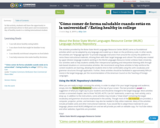
In this activity, students will have the opportunity to give nutritional advice to their peers and recommend a day of healthy meals to a visiting international student.
- Subject:
- Arts and Humanities
- Material Type:
- Activity/Lab
- Date Added:
- 03/11/2019

In this activity, students will have the opportunity to give nutritional advice to their peers and recommend a day of healthy meals to a visiting international student.
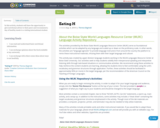
In this activity, students will have the opportunity to give nutritional advice to their peers and recommend a day of healthy meals to a visiting international student.
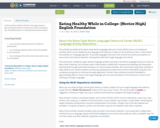
In this activity, students will have the opportunity to give nutritional advice to their peers and recommend a day of healthy meals to a visiting international student.

Students will practice telling the time from visual and verbal cues. They will also practice responding to situations with a schedule.
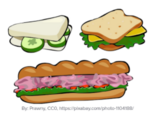
When I think of school lunches I think about sandwiches, pizza, hot dogs, etc. In this seminar you will be able to identify common lunch foods in Spanish. You will be able to use these words in school and in the outside world. So plan your next lunch date because you are going to be able to order off the menu in Spanish!ACTFL StandardsCommunication: Interpersonal Communication, Presentational CommunicationCultures: Relating Cultural Practices to PerspectivesComparisons: Cultural ComparisonsLearning TargetI can identify menu itemsHabits of MindApplying past knowledge to new situationsCritical Thinking SkillConstruct MeaningClassifying
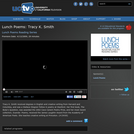
Tracy K. Smith received degrees in English and creative writing from Harvard and Columbia, and was a Wallace Stegner Fellow in poetry at Stanford. Her first book, The Body's Question, was awarded the 2002 Cave Canem Poetry Prize, and her most recent collection, Duende: Poems, received the James Laughlin Award from the Academy of American Poets. She teaches creative writing at Princeton. (29 minutes)

In this activity, students will use vocabulary describe what they eat for breakfast, lunch, and dinner. Students will also be able to identify whether or not the meal is nutritious and healthy. Students will learn more about how to describe food and health. Students will also learn more about reading and understanding nutrition fact.
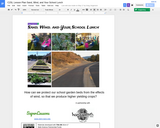
Last year the Siuslaw 97J School District changed our food service operation from a national supplier (Chartwell’s) to in-house food service. Our Food Service Manager instituted an organic philosophy and wanted to source local produce. Utilizing our school garden program we now help supply fresh produce for our Siuslaw Elementary School cafeteria. Crop production is stronger in the 4/5 wing because of wind protection from the building. Florence experiences high winds and we are located close to the beach so we have constant sand blowing into our crops. The K-3 garden beds do not have the same protection as the 4/5 beds, and as a result have a lower yield. Our goal is to have students design and engineer wind barriers for these beds and then present the best solutions to our school board so that we can get funding to implement our ideas. This project can be used in any school with a garden by using preexisting barriers on a the school property. The unique environment of the school would dictate the lessons required to be adapted to fit the environmental needs of the community. If the school is lacking a garden, the students can focus on an at home garden project.
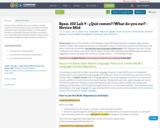
In this activity, students will use vocabulary describe what they eat for breakfast, lunch, and dinner. Students will also be able to identify whether or not the meal is nutritious and healthy. Students will learn more about how to describe food and health. Students will also learn more about reading and understanding nutrition fact.

In this activity, students will use vocabulary to describe what they eat for breakfast, lunch, and dinner. Students will also be able to identify whether or not the meal is nutritious and healthy. Students will learn more about how to describe food and health. Students will also learn more about reading and understanding nutrition facts.
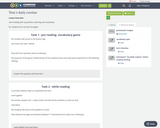
start reading with my partners, learning new vocabulary.for students from A2 level of english
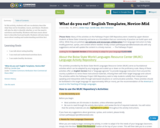
In this activity, students will use vocabulary describe what they eat for breakfast, lunch, and dinner. Students will also be able to identify whether or not the meal is nutritious and healthy. Students will learn more about how to describe food and health. Students will also learn more about reading and understanding nutrition fact.